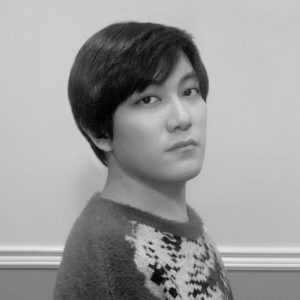
Jeremy Bonggu Kang
LaSalle College, Vancouver Canada
Emerging Graphic Design of the Year for ‘Mystic Wings’
Jeremy Bonggu Kang is a multidisciplinary graphic designer, painter, illustrator skilled in developing concepts and visualizing creative ideas in exquisitely detailed design. He graduated from Seoul Art High School and received a bachelor’s degree in painting at Seoul National University in Korea. He then moved to Vancouver, Canada to study graphic design at LaSalle College, (formerly the Art Institute of Vancouver) and received a bachelor’s degree in graphic design in 2019.
What do you see as the strengths of your winning project and what does this award mean to you personally?
One of the strengths of my project, ‘Mystic Wings’, is the power of illustration that evokes the children’s imagination. It visualizes ancient-winged creatures from all over the world with full-colour and full-spread illustrations with details. And another strong point of the project is the interesting layouts balanced with illustrations and texts.
I totally enjoyed the process of creating this project. I love to create illustrations using my imagination, so I was excited from the very moment of researching the myths around the world.
How do you think your own culture and environment has shaped your personal and professional creative vision?
I first studied Fine Arts – painting, before studying graphic design. All the knowledge and skills help me in every step of designing. I love to research, develop concepts, and visualize them, and then those knowledge and skills help me to effectively translate concepts to visuals with high quality.
What’s your creative process and what creative software do you use?
My creative process is like this: researching – analyzing – developing concepts – visualizing – designing. I like every step of the process, and I try to build a strong concept for each project. That’s why I spent much time on the first four steps out of the five, especially the first three. I strongly believe that every design needs a strong concept and visuals that perfectly match each other. And I believe that can be achieved from the very early stages of design: the research, analysis, and developing concepts. I think I don’t have any special software when I design but just do a lot of preparation, sketches, and mind-mapping as a brainstorming tool.
How do you deal with feedback?
I think feedback is essential for the best design result that satisfies a client and a designer. So, I try to listen really carefully to what the clients or other designers have said about my work. I try to satisfy the client the most but not in the way to harm the design following the basic design principles. If the client wants to change the design in bad ways (from my designer’s perspective), I try my best to persuade the client.
What are you working on, what is in the pipeline for you?
I’m working as a part-time graphic designer in POIEO Centre, a Christian Arts Ministry and teaching students as an art tutor. Actually, I’m looking for a full-time job now.
What kind of questions do you ask before beginning a design project? What piece of information is of utmost value?
What is the main purpose and need of this design project? Who’s the target audience/user of the project? What brand identity does this client have? These are the few questions that I ask before beginning a design project. I try to understand as much as I can about the client first. What are the values they pursue? And what kind of brand identity they have built until now? The results must satisfy the purpose and need of the specific client’s specific needs.
What impact has winning this IDA Award had on your career/opportunities?
It really gives me the courage to have faith in what I’ve done and what I am doing at the moment as a designer. The fact that I won the several IDA Award prize and was selected as an ‘Emerging Graphic Designer of the Year’ confirms to me that my steps as a graphic designer were not wrong at all. I hope this opportunity will open the door for the next steps of my life.
What was most important for you when planning the project and what were the biggest challenges you faced?
I tried to avoid stereotyped illustrations about the mythical creatures from the researching stage for the’ Mystic Wings’. I tried to use my own imagination and to persuade myself first, by throwing myself a question: “Do you think your illustrations can be the eye-witnessing pictures for these mythical creatures?”
The biggest challenge for the project was time. The original plan for the book had many more creatures than now. The project was for the senior project at the last term before graduation, and I didn’t have enough time to finish all the illustrations from the original plan. I’m working on the rest of the pages for the publication of the book.
Where do you get motivation and inspiration for your work?
I get my motivation and inspiration from various sources, including my daily life, social issues, old masters, and other designers. Especially, I tried to upgrade and polish my ‘taste’ about culture. My painting, fine art, background, including all the painting skills and knowledge about art history, really helps me to have high standards. Also, the works from the old masters to current designers excite me about creating new works.
Tell us about a time when a client disliked your work.
I had some experiences when clients were not satisfied with the drafts I made. But I always try to find a better solution for the client. I try to have more conversations and suggest better options for the client because I can be very versatile with many different design styles.